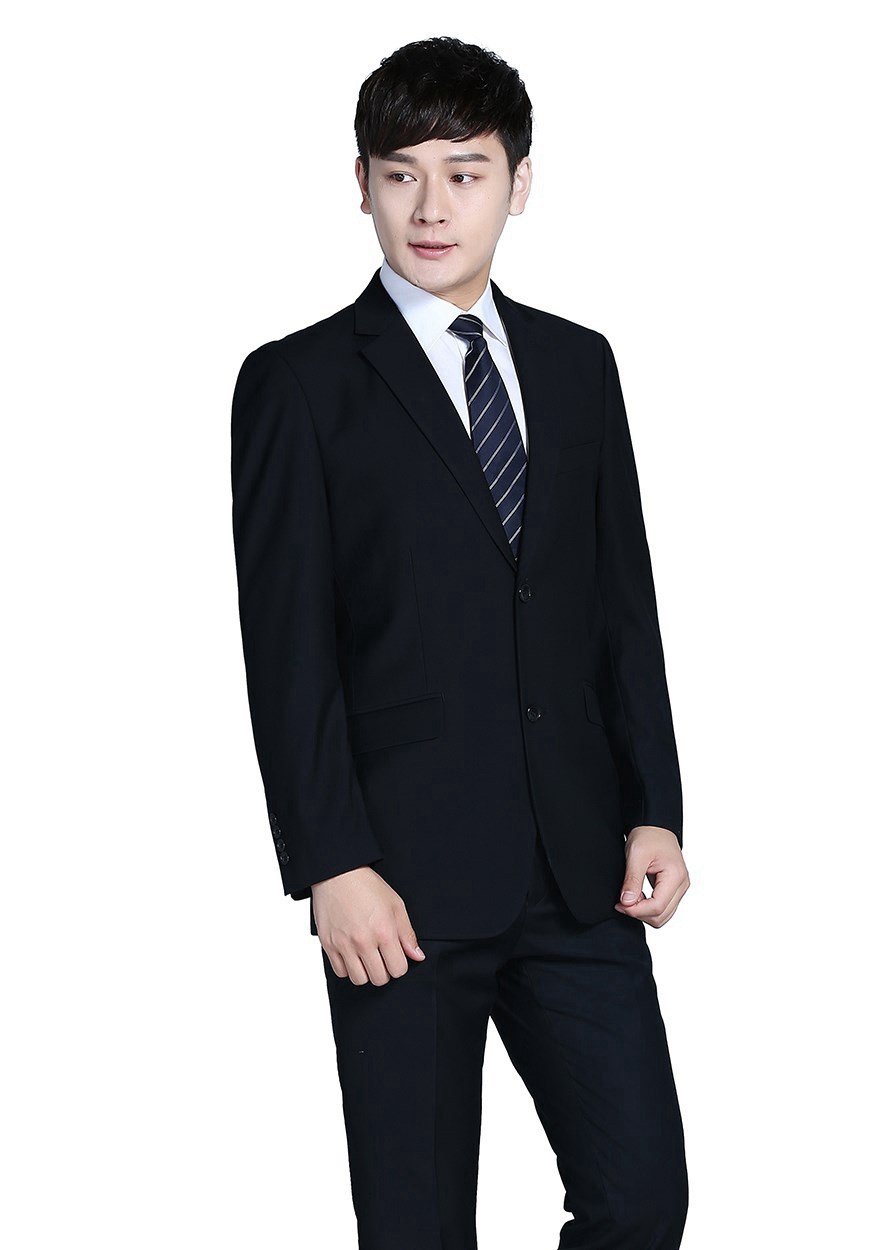How to distinguish the fabrics of custom-made men’s suits? As a business attire for customized men’s suits, it is essential to choose a fabric that you like and suitable. When talking about custom-made men’s suits, the first impression is that they are very formal. There are various styles, complex arrangements, and a lot of etiquette. The most important thing is that it can be customized for men. So for upper-class men who pursue quality, tailoring a suit will definitely involve choosing a suitable and high-quality suit. Fabrics, let’s introduce some knowledge about custom-made fabrics for men’s suits and what are the fabric components of custom-made clothes.

1. Fabric knowledge:
The wool content is 100%, the texture is very thin, and the surface texture and smoothness are relatively good. The glossiness is relatively good and it has elasticity. Wrinkles can be restored in a short time without leaving wrinkle marks. The drawback is simple pilling. This kind of fabric is called pure wool imitation fabric.
The wool content is 100%, the texture is very thick, and the texture on the surface is clear. Good gloss and elasticity. Wrinkles will not leave wrinkle marks. This kind of fabric is more commonly used for custom-made men’s suits in autumn or winter. Disadvantages: It is easy to pill and mold, so you need to pay attention to maintenance. It is also a top-quality fabric. We call it: pure wool woolen cloth
Under the sun, you can clearly see the bright spots. It is not as soft as pure wool. It has a relatively good stiffness effect on the suit. It has a very stylish shape and the sense of width becomes wider as the polyester content increases. The harder it is, the less likely it is to wrinkle. It is a mid-range suit fabric. We call it: wool and polyester blended fabric.
The fabric has poor gloss, is not very soft to the touch, and is not as wide as polyester blended fabrics. Because it is relatively cheap and does not require much maintenance, more people use it for casual wear, and it is relatively comfortable to wear. , can also be regarded as a mid-range fabric, we call it: wool and viscose or cotton blended fabric.

2. Fabric composition:
Hemp: It is a kind of plant fiber, known as a cool and noble fiber. It has good hygroscopicity, releases moisture quickly, is not easy to produce static electricity, has large heat conduction, and quickly dissipates heat. It is cool to wear, does not stick to the body after sweating, and is more resistant to washing and heat resistance. Good sex.
Mulberry silk: natural animal protein fiber, smooth, soft, shiny, warm in winter and cool in summer, has a unique “silk sound” phenomenon when rubbed, has good extensibility, good heat resistance, and is not resistant to heat. Salt water corrosion should not be treated with chlorine bleach or detergent.
Viscose: processed from natural cellulose-containing materials such as wood, cotton linters, reeds and other chemical materials. It is also often called artificial cotton. It has the basic properties of natural fibers, good dyeing performance, good fastness, soft fabric, and heavy specific gravity. , good drape, good hygroscopicity, cool to wear, not prone to static electricity, fluffing and pilling.
Acetate fiber: It is chemically processed from natural materials containing cellulose. It has the style of silk, is light and comfortable to wear, has good elasticity and elastic recovery properties, is not suitable for washing, and has poor color fastness.
Polyester: It is a polyester fiber with excellent elasticity and recovery properties. Custom-made clothing fabrics are crisp, wrinkle-free, good shape retention, high strength, good elasticity, durable and have excellent light resistance, but it is easy to generate static electricity. And vacuuming has poor hygroscopicity.
Nylon: It is polyamide fiber, also known as nylon. It has better dyeability than synthetic fibers. It is light to wear, has good waterproof and windproof properties, has high abrasion resistance, and has good strength and elasticity.
Polypropylene: Appears like woolen silk or cotton, has waxy feel and luster, elasticity and recovery properties and is generally not prone to wrinkles. Small specific gravity, light weight, good clothing comfort, can transfer sweat faster to keep the skin comfortable, and has relatively high strength and wear resistance. Very durable and not resistant to high temperatures.
The above are some common custom-made suit fabrics and custom-made clothing components compiled by technicians for you. Correctly analyzing and identifying fabric properties and accurately and reasonably applying them to clothing design is the basic knowledge that every designer needs to master, otherwise fabric identification errors may occur. It will cause problems in the design, production, wearing or washing of the entire garment. The identification of custom-made clothing fabrics includes raw material identification, appearance feature identification and appearance quality identification of custom-made clothing fabrics.
Tag: custom-made suits
p>







